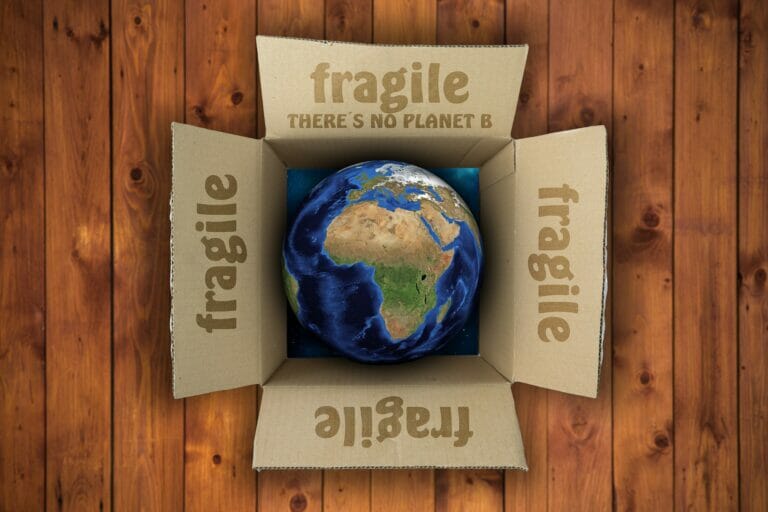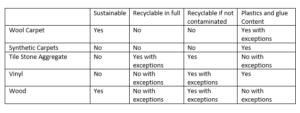
and how to keep it as low as possible
“It is not the strongest of the species that survives, nor the most intelligent. It is the one most adaptable to change” – Darwin – Christ College Cambridge
As we can see from the famous words from Darwin – There is only one constant, and that is change
After working in the flooring and soft furnishing care industry for over 17 years, I have seen this happen, and it is happening as you read this article.
Let’s take a moment and explore what the future of flooring may look like.
The most significant trend driving change in the flooring industry is the environmental impact. Specifiers in the building industry recognise that more and more people have become acutely aware of their impact on the environment. This places a laser focus on how my home impacts the environment. After you have purchased your home, the most significant investment will be the investment in flooring, and it is here; I wish for us to dwell for a while.
Types of Floors
There are mainly four types of Floors available when flooring your home
Each of these floor types has benefits and drawbacks. For the interest of this article, I would focus on the environmental impact of each.
This floor type will have a significant impact on the environment before installation. Enormous amounts of the earth must be moved, and mountains get ripped open to expose Limestone, Marble Travertine and other stone types. It requires a lot of energy to make this type of floor. These floors are sold with the benefit of low or no maintenance. This is hardly ever the case as these floors do require special care.
Once these floors come to the end of their useful life, the floors can be lifted and crushed, and most of the waste can be reused. In some cases, the glues and fillers can contain plastics or polymers, making it impossible to recycle fully.
The most attractive factor of the floor type is the sustainability of the bulk of the product, considering the timber is sourced from fully sustainable and managed sources this floor types. There will be a good amount of work involved to grow forests and turn trees into usable timber. A great benefit over other floor types is that the timber that makes up your floor has absorbed a lot of C02 in the time the trees were growing. The wood floor below your feet can be seen as a significant carbon store.
Once a wood floor comes to the end of its life, we see floating floors being easier to lift off the floor, whereas glued down floors require much more work. Glued down timber floors will also be contaminated with the glues used to secure them to the floor. It is more probable that good quality glued down floors may, on average, be more stable and outlast cheaper floating wood floors thus, the downside
The main types of carpets can be classed into Synthetic carpets (Made from Synthetic Fibers and Natural Fibre Carpets (Made from Wool, Silk, or Plant fibres)
Though a Capet may be made from natural fibres, it will likely contain some synthetics in the constructing parts (Weft and Warp) and the backing. This makes carpet very difficult, in fact, impossible to recycle. A few things that make carpet a very attractive floor covering are that the subfloor does not need to be as smooth/level nor as dry as wood or vinyl floors. It is easy to install and easy to uplift. It allows for the movement of moisture through the carpet (within reason)
End of Life considerations.
As mentioned, it is hard, in fact, impossible to recycle most carpets (there are exceptions, though), which means most carpets would end up in landfills or in energy production. This means carpets are burned in a furnace as a fuel source to generate heat to produce electricity. It sometimes gets used in furnaces as a fuel source to generate heat for other uses.
A tremendous all-around floor covering though it has its limitations. A smooth well prepared, and dry subfloor is always needed. The types of vinyl flooring include – Tile or sheet. Tile types can be glued down, or a vinyl version is available. A drawback with the click vinyl is that the tiles do not remain connected, and gaps appear; therefore, glued tiles may be preferred. All vinyl floors must be laid on a dry floor with a perfect damp proof system.
Click vinyl, and some loose lay sheet vinyl can be lifted, and a select few can be recycled. Some vinyl floors contain silica sand, and this makes it impossible to recycle the floor type. For glued down floors, the uplifting process can leave residues on the back of tiles (glues and, in some cases, parts of the floor. This leaves a mixture of waste that is sadly not recyclable.
Would you consider the environmental impact, it is likely that Carpets made of natural fibres tick most eco boxes though it is not a perfect solution?
The floor covering with the gigger sentimental impact may be Stone as the mining process is labour intensive with big mining machines burning through fossil fuel and the mining process leaves a scarred landscape. Vinyl flooring is mainly made from plastic, and this is not always recyclable – if fact, very few types can be recycled.

In my research, I have found all floor types have a profound impact on the environment. The best thing to do to keep the impact as low as possible is to maintain these floor types correctly to get the most useful life from them, thus reducing waste.
We must all realise that we are in control of our choices, and the change we want to see in the world must start with us. As Darwin said – To stand the best chance for the future, we must be adaptable and ready to change. How can you change your floors to reduce the impact on the environment?
Choose a floor covering that is totally sustainable for your needs and combine that with a floor that will have the least impact on the environment. Choose a floor covering that is fully or at least partly recyclable, and lastly – care for your floors in the right way in a constant fashion to make them last as long as possible.
What do I get for the cost of using a professional Carpet Cleaner?
For further advice or information on our Carpet and Soft Furnishing care, please do not hesitate to contact the Art of Clean team on 01223 901547 in Cambridge. Our services include Carpet Cleaning, Upholstery Cleaning, oriental and area Rug Cleaning, Curtain Cleaning, Patio, and Driveway Pressure washing, Leather Cleaning, Stone and Tile Floor Cleaning

For further advice or information on our Carpet and Soft Furnishing care, please do not hesitate to contact the Art of Clean team on 01223 901551 in Cambridge. Our services include Carpet Cleaning, Upholstery Cleaning, oriental and area Rug Cleaning, Curtain Cleaning, Patio, and Driveway Pressure washing, Leather Cleaning, Stone and Tile Floor Cleaning, and Wood Floor Sanding and Restoration. We also supply new flooring and carpets through our sister company Art of Flooring. Farthings Cambridge provides our Dry-Cleaning service